Manaslu Circuit 15-day trek:

Manaslu Circuit Trekking has been open only since 1991 for outsider travelers. This trek is a unique opportunity to experience and explore Pristine Mountain views, rich culture, and genuine adventure surrounding the "untouched" region of Nepal. Mt. Manaslu 8,163m tall, is one of the most beautiful mountains in Nepal. Manaslu is derived from the Sanskrit word “MANASA,” which is translated as the mountain spirit. The trek begins from the old, independent kingdom of Gorkha to the Budi Gandaki valley. Distinctively people are Buddhist, and their links are transmitted from the Tibetan tradition. The flat-roofed houses boast Monasteries with embossed prayer wheels and Chortents guarding the entrances of towns. The Tibetan monks inhabiting sacred monasteries give the joy of the Tibetan feeling and spirituality. This area offers a combination of cultural heritage, unsurpassed beauty, and biological diversity. The Manaslu was climbed 1956 for the first time by Japanese alpinist. The trek is relatively enriched by flora and fauna, ascending and descending through the alpine forest, Himalayan villages, and landscapes comes to join at Dharapni the main classic trail to the Annapurna Circuit route, then ending in Besisahar by overland drive.
Important Trip Features
Diverse Landscapes: The trek takes you through a remarkable variety of terrain, from lush sub-tropical forests and terraced fields in the lower regions to high alpine pastures and glacial valleys. You'll cross numerous suspension bridges, follow the Budhi Gandaki River upstream, and pass through traditional Tibetan-influenced villages.
Stunning Mountain Views: The breathtaking panorama of snow-capped peaks, including Manaslu, Himalchuli, Ngadi Chuli, Ganesh Himal, and the Annapurna range.
Larkya La Pass: The challenging Larkya La Pass, at an altitude of approximately 5,106m, is the highest point of the trek and offers unparalleled views. It's often the most demanding section due to its altitude, rocky, and potentially snow-covered terrain.
Necessary Permits for Manaslu Circuit Trek
1. Manaslu Restricted Permit:
(Individual trekker is not allowed on the Manaslu Circuit trek)
Manaslu trek permit from September to November (autumn) will cost USD 100 for the first seven days and USD 15 for each additional days Manaslu trek permit from December to August (winter, spring, and summer) will cost USD 75 for the first seven days and USD 10 for each additional day
2. Manaslu Conservation Area Permit:
MCAP Entry Fee for SAARC: NRs 1000 per person
MCAP Entry Fee for other nationals: NRs. 3000 per person
3. Annapurna Conservation Area Permit (ACAP):
ACAP Entry Fee for SAARC: NRs. 1000 per person
ACAP Entry Fee for other nationals: NRs. 3000 per person
Whereas, you can also continue the Annapurna Circuit Trek or the Annapurna Base Camp route. You need to apply for the TIMS card. It will cost USD 30 per person.
Manaslu Trekking Permits Terms and Conditions:
- For children under 10 years of age, no need to apply for permits
- Trekkers need permits for MCAP and ACAP
- An entry permit is non-refundable as well as non-transferable and valid for a single entry only
- The person entering the Conservation Area shall abide by the National Park and Wildlife Conservation Act, 2029 B.S. (1973) and the Regulations made under this Act
- Entry Permits will not be issued from any check posts along the trekking routes of the Conservation Areas. It is only available from the Kathmandu and Pokhara tourism board office
- Entry permits must be carried during the entire trek and should be shown at checkpoint
- Above Manaslu trek, permit cost includes 13% Value Added Tax (VAT) and all other government taxes
Best Time to Trek:
Spring (March-May): consider the best times for Manasalu Circuit trek, which offers pleasant temperatures, blooming rhododendron forests, and clear mornings.
Autumn (September-November): Provides stable weather, crisp air, and stunning visibility of snow-capped peaks after the monsoon. October is often cited as the peak month for trekking in Nepal, offering ideal conditions.
Monsoon (June to August): Brings heavy rainfall, making trails slippery and views obscured.
Winter (December to February) is very cold, with snow at higher altitudes, and some teahouses may be closed, making the Larkya La Pass crossing particularly challenging and potentially requiring specialized gear.


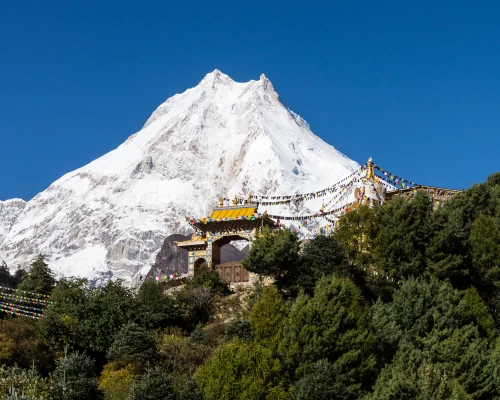
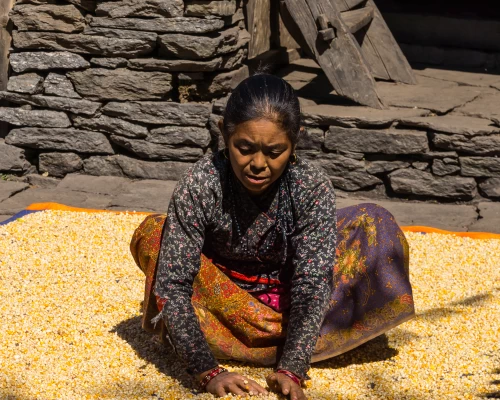
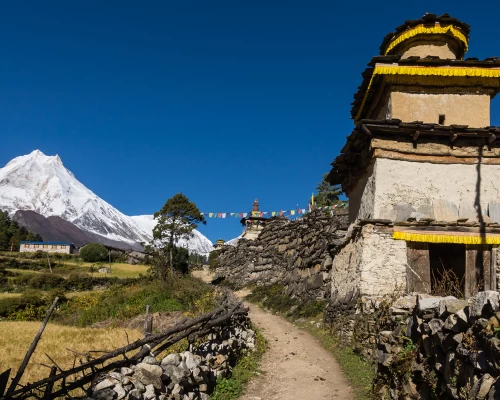
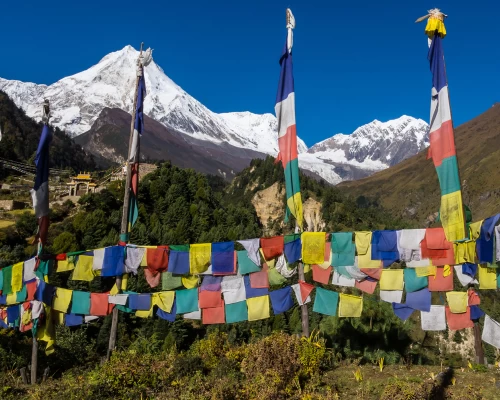
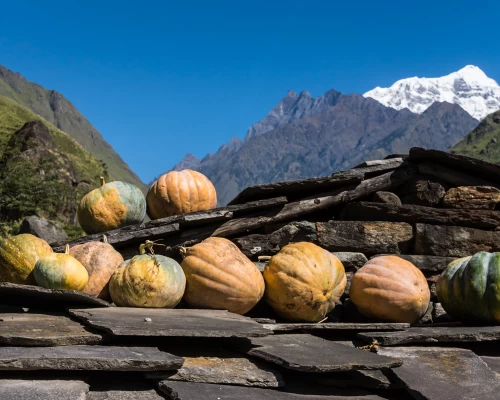
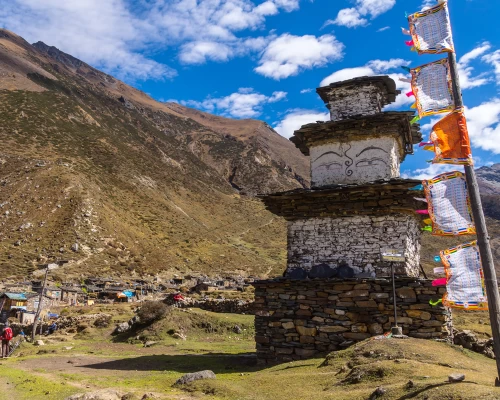
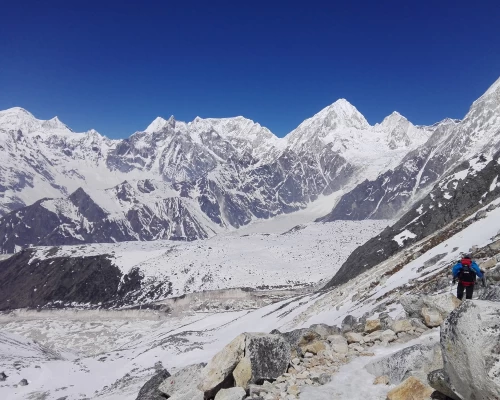
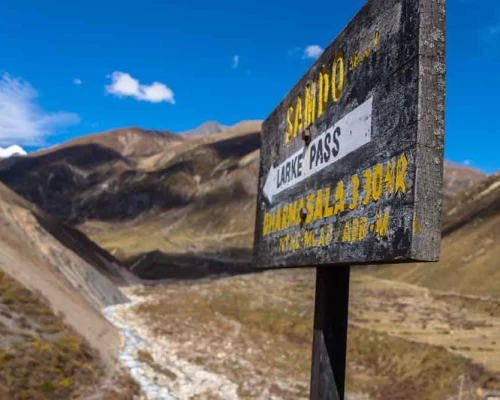
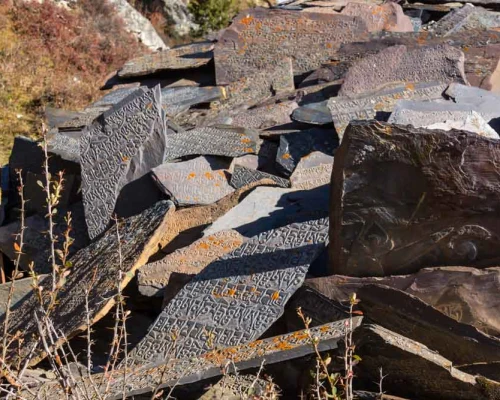
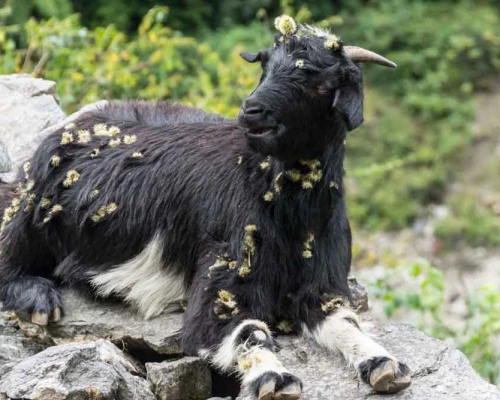
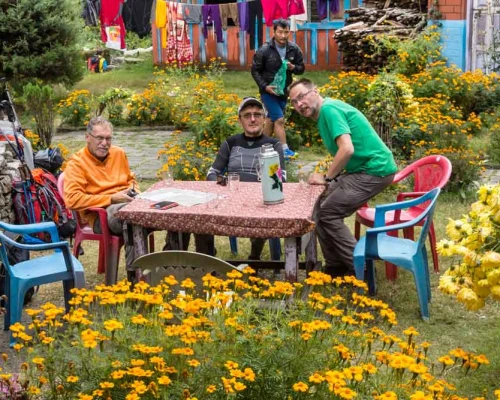
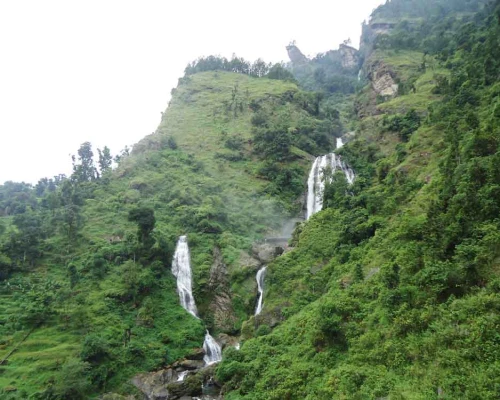
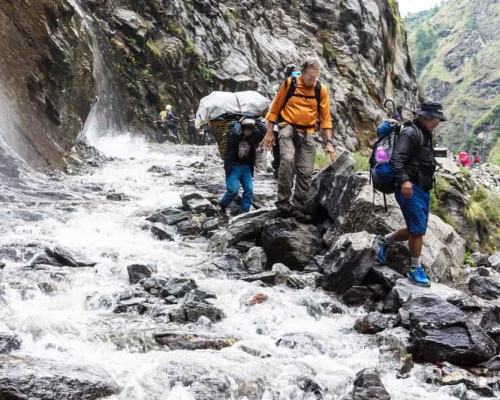
 We start overland driving along the Prithvi highway till Anbu Khaireni and turn towards Dhading Besi or Gorkah road by seeing the wonderful views of picturesque landscapes, mountains, villages, terraced fields, and the lifestyle of different ethnic groups. Lunch break will be somewhere along the road in a good restaurant, which mostly serves the Nepalese famous Daal bhat. The roads are rough and tough everywhere in Nepal, so the bumpiest road starts onwards Arughat Bazaar onwards.
We start overland driving along the Prithvi highway till Anbu Khaireni and turn towards Dhading Besi or Gorkah road by seeing the wonderful views of picturesque landscapes, mountains, villages, terraced fields, and the lifestyle of different ethnic groups. Lunch break will be somewhere along the road in a good restaurant, which mostly serves the Nepalese famous Daal bhat. The roads are rough and tough everywhere in Nepal, so the bumpiest road starts onwards Arughat Bazaar onwards.









